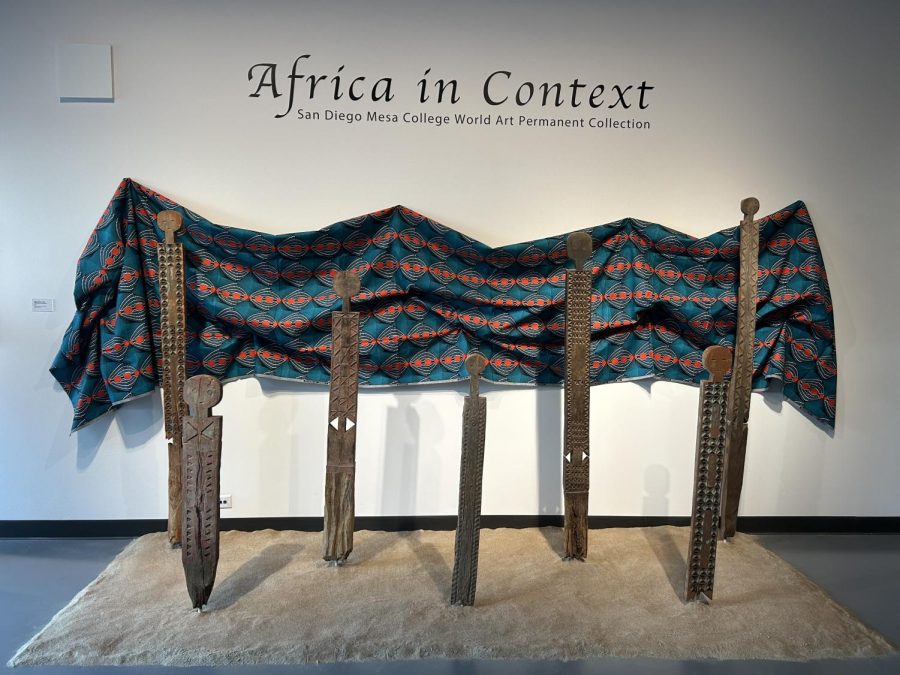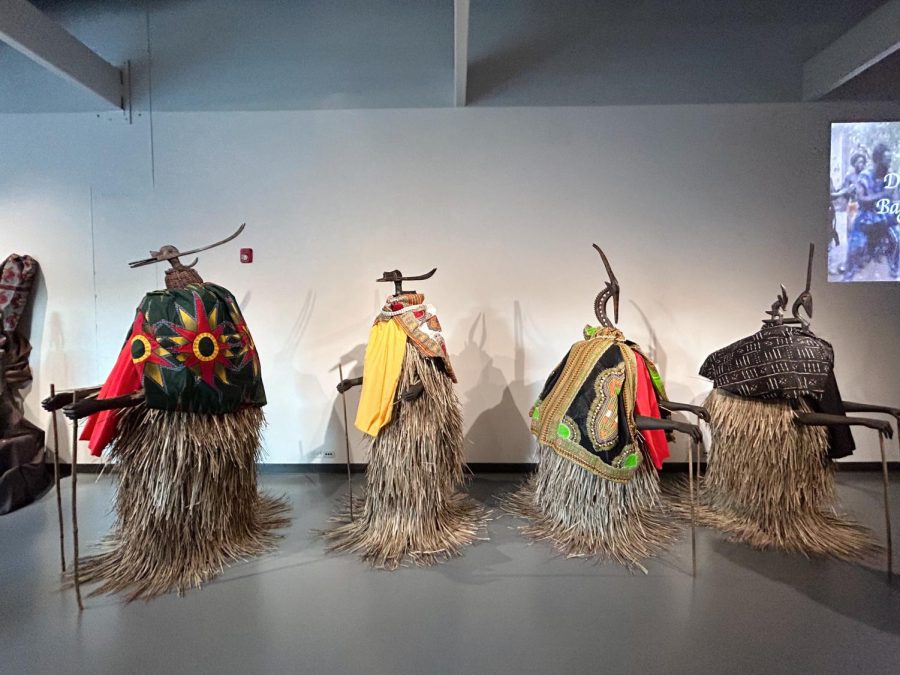The San Diego Mesa College Art Gallery held a reception on Thursday, Feb. 9 at 4:00 p.m., to present “Africa in Context: San Diego Mesa College World Art Permanent Collection” in honor of Black History Month. “Africa in Context,” organized by Dr. Denise Rogers, featured various unique artworks that captured African culture, performance, and rituals. The Mesa College art gallery team worked with student assistants, Museum Studies program graduates and local artists to collectively create the gallery.
The World Cultures Art Collection included over 1,200 pieces from around the world and many of the art pieces had not been displayed publicly in over six years.
The reception began with an upbeat dance and music performance inspired by African culture. Visitors watched the production while enjoying complimentary light refreshments. Directly after the performance Dr. Denise Rogers, a professor of art history at Mesa College, briefly spoke about the exhibition and the hard work that went into creating it. She introduced several individuals and explained their important roles in creating “Africa in Context.”
One individual that Dr. Rodgers introduced to the visitors was her sister, Clarissa Sherman. Sherman provided the African fabric for the exhibit. When asked where the fabric came from, she said it came from everywhere, including Africa. Sherman described the reception as amazing and explained that it was great to interact with both students and professors on campus.
After Dr. Rogers’ speech, the doors to “Africa in Culture” were opened. Visitors experienced creations from a variety of African countries and regions including Ghana, Mali, Yoruba, and the Democratic Republic of Congo. Common themes showcased throughout the artwork included feminine power, ancestry, healing, and mourning. Feminine power was accentuated in this exhibit through several creations that represented fertility and motherhood.
Each selected piece in the room held great significance, but there were a few crowd favorites. The Ere Ibeji pieces, from the Yorubu people of Nigeria, seemed to catch the attention of many. The pieces represented the history of the high level of twin births amongst the Yoruba people; the creation of Ere Ibeji occurs with the tragic death of a twin. Ere Ibeji serve as vessels for the spirits of deceased twins. The figures in the art gallery were meant to activate the spirit of the deceased twin. These figures were rubbed with cam wood and ritually washed to maintain their spiritual power.
The exhibit acknowledges the concerns and feelings visitors may have when faced with issues discussed throughout the exhibit, including the renewed concern about the origins of African artworks in European and Western collections, a questioning on how they were acquired, and whether they should be repatriated. According to the “Africa in Context” flyer, this exhibit “proceeds with awareness of the cultural weight of these precious objects, counterbalanced by the college’s educational mission and the curatorial team’s efforts to present these artworks in ways that are meaningfully connected to their cultures and contexts.”
Black History Month is celebrated from Feb. 1 through Mar. 1, honoring the achievements of African Americans. Mesa College held several events throughout February, including “Africa in Context,” in honor of the generations of African Americans who struggled throughout U.S. history.
The meaning of African art derives from the connection to cultures; it’s more than just artifacts. “Africa in Context” allowed visitors to feel connected to African culture and several emotions were evoked. The World Cultures Art Collection Committee is accepting funds and donations to house and expand the accessibility of the Collection. For additional information about the exhibit and Mesa College art program, please visit https://www.sdmesa.edu/art-gallery or contact the gallery at (619) 388-2829.





